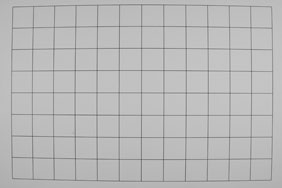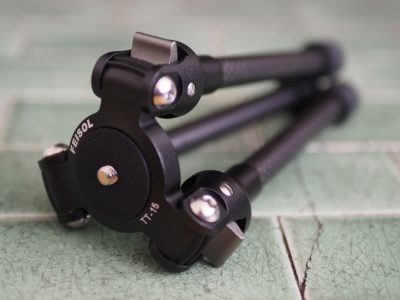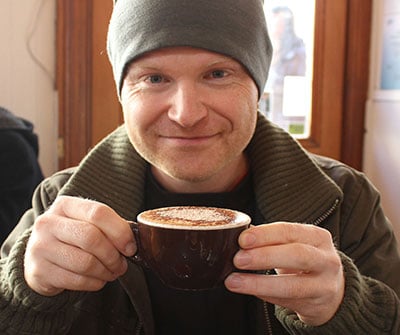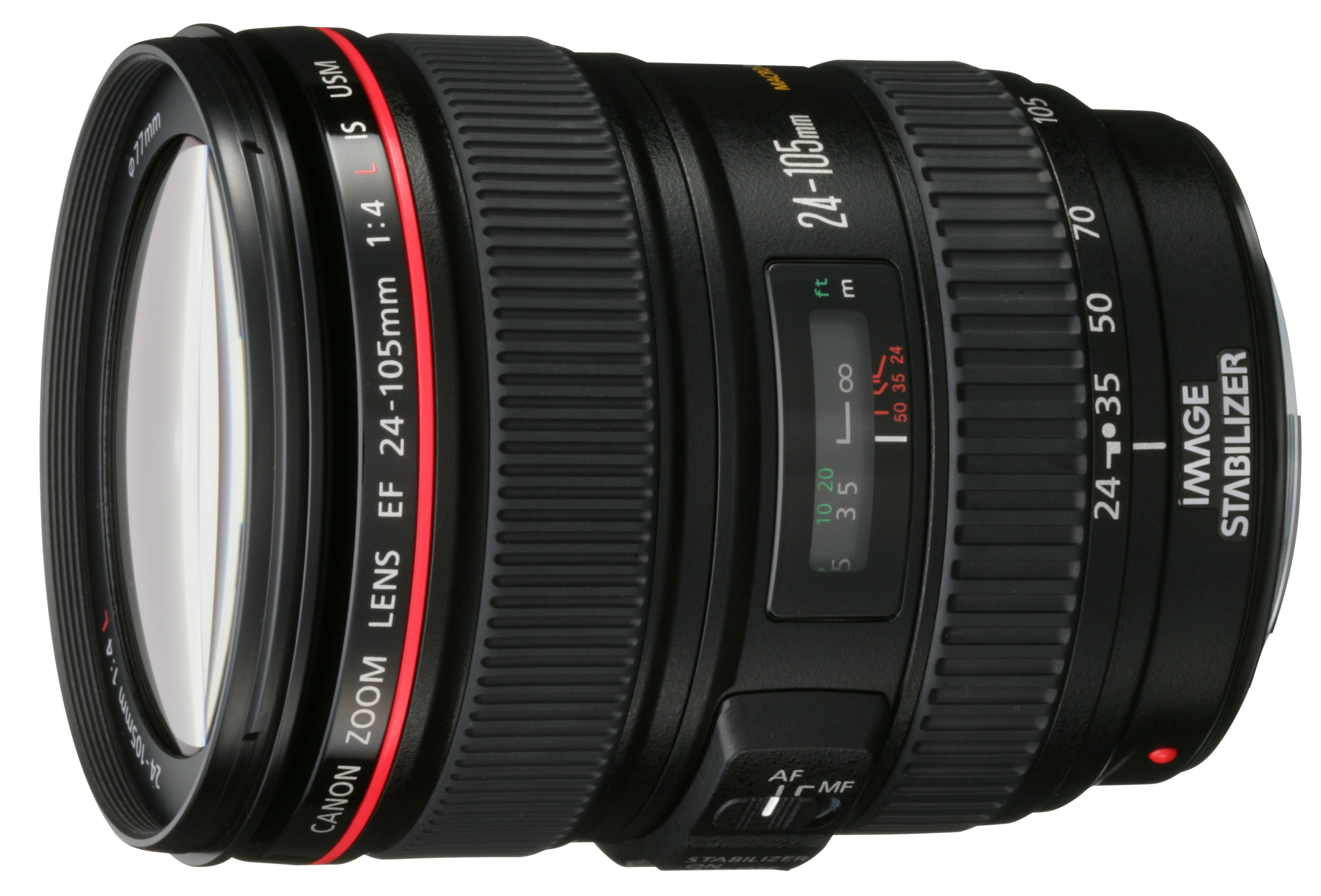
Canon EF 24-105mm f/4L IS USM, (tested with cropped-frame APS-C body)
-
-
Written by Gordon Laing
Quality
Canon EF- 24-105mm f/4L IS USM resolution using Canon 400D / XTi
With 2150 lpph of horizontal and vertical resolution, the Canon EF 24-105mm delivers as good a result as we’ve measured on the EOS 400D / XTi body. That said, you’ll achieve the same resolving power in this test with the EF 17-40mm or EF-S 17-85mm. All three improve on the EF-S 18-55mm kit lens in this test by almost 10%, proving the benefit of fitting a higher quality optic. Now let’s see how the EF 24-105mm performs in terms of corner sharpness.
Canon EF 24-105mm f/4.0L IS USM | Canon EF-S 17-85mm f/4-5.6 IS USM | |
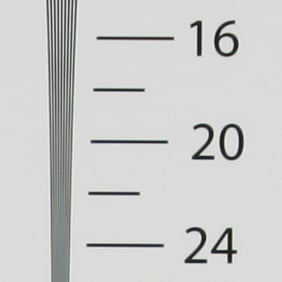 |  | |
2150 lpph, 24-105mm at 35mm, f8, 100 ISO | 2150 lpph, 17-85mm at 35mm, f8, 100 ISO | |
Canon EF-S 18-55mm f/3.5-5.6 | Canon EF 17-40mm f/4.0L USM | |
 |  | |
2000 lpph, 18-55mm at 35mm, f8, 100 ISO | 2150 lpph, 17-40mm at 35mm, f8, 100 ISO |
Canon EF 24-105mm f/4.0L IS USM | Canon EF-S 17-85mm f/4-5.6 IS USM | |
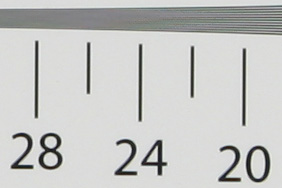 |  | |
2150 lpph, 24-105mm at 35mm, f8, 100 ISO | 2150 lpph, 17-85mm at 35mm, f8, 100 ISO | |
Canon EF-S 18-55mm f/3.5-5.6 | Canon EF 17-40mm f/4.0L USM | |
 |  | |
2100 lpph, 18-55mm at 35mm, f8, 100 ISO | 2150 lpph, 17-40mm at 35mm, f8, 100 ISO |
Canon EF- 24-105mm f/4L IS USM corner sharpness using Canon 400D / XTi
To measure and compare the Canon 24-105mm’s corner sharpness on a cropped-frame body we photographed the Enhanced Digital Camera Resolution Chart with it and a number of lenses using a Canon EOS-400D / XTi. The 400D / XTi was set to Large Fine JPEG mode and its Standard Picture Style.Each lens was tested at its widest and longest focal lengths and with various apertures using Aperture Priority mode. The crops are taken from the lower left corner of the chart and presented here at 100%. The wide angle crops show a slightly larger area of the chart because the minimum focusing distances forced us to shoot from a little further away. No crops have been resized.
The Canon EF 24-105mm is designed for use on a full-frame body, so by mounting it on a cropped-frame model, you’d expect it to perform better in these less extreme corner areas. As you can see from the crops below, the EF 24-105mm isn’t perfect with a little fringing apparent when zoomed-out, but it clearly out-performs both EF-S lenses in this first test. The other full-frame lens, the EF 17-40mm also shows an advantage here.
With all four lenses zoomed-in, the playing field becomes much closer. There’s some softness on the EF 24-105mm with its aperture wide open, but otherwise the results are good. That said, the EF-S 17-85mm delivers a better esult here when its aperture is wide open. In the meantime, the Canon EF-S 18-55mm kit lens is looking soft here. Now let’s take a look at the fringing and macro results.
Canon EF 24-105mm f/4.0L USM | Canon EF-S 17-85mm f/4-5.6 IS USM | Canon EF-S 18-55mm f/3.5-5.6 | Canon EF 17-40mm f/4.0L USM | |||
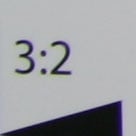 | 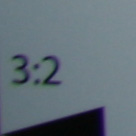 | 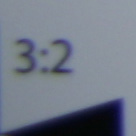 | 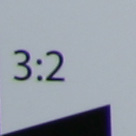 | |||
24-105mm EF L at 24mm f4 | 17-85mm EF-S at 17mm f4 | 18-55mm EF-S at 18mm f3.5 | 17-40mm EF L at 17mm f4 | |||
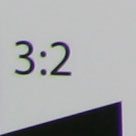 | 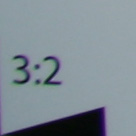 | 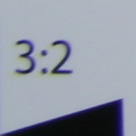 | 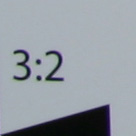 | |||
24-105mm EF L at 24mm f8 | 17-85mm EF-S at 17mm f8 | 18-55mm EF-S at 18mm f8 | 17-40mm EF L at 17mm f8 | |||
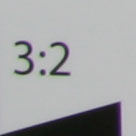 | 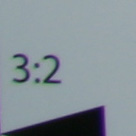 | 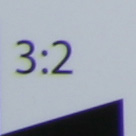 | 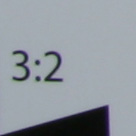 | |||
24-105mm EF L at 24mm f16 | 17-85mm EF-S at 17mm f16 | 18-55mm EF-S at 18mm at f16 | 17-40mm EF L at 17mm f16 | |||
Canon EF 24-105mm f/4.0L USM | Canon EF-S 17-85mm f/4-5.6 IS USM | Canon EF-S 18-55mm f/3.5-5.6 | Canon EF 17-40mm f/4.0L USM | |||
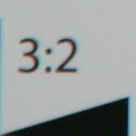 | 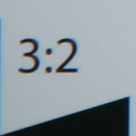 | 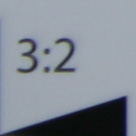 | 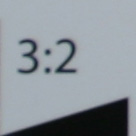 | |||
24-105mm EF L at 105mm f4 | 17-85mm EF-S at 85mm f5.6 | 18-55mm EF-S at 55mm f5-6 | 17-40mm EF L at 40mm f4 | |||
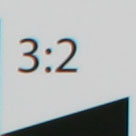 | 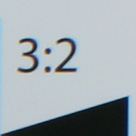 | 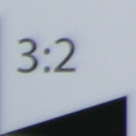 | 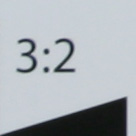 | |||
24-105mm EF L at 105mm f8 | 17-85mm EF-S at 85mm f8 | 18-55mm EF-S at 55mm f8 | 17-40mm EF L at 40mm f8 | |||
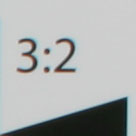 | 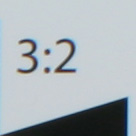 | 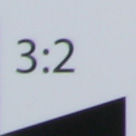 | 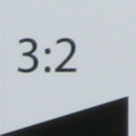 | |||
24-105mm EF L at 105mm f16 | 17-85mm EF-S at 85mm f16 | 18-55mm EF-S at 55mm f16 | 17-40mm EF L at 40mm f16 |
Canon EF 24-105mm f/4L IS USM purple fringing using Canon 400D / XTi
To measure and compare the Canon 24-105mm’s purple fringing caused by lens chromatic aberrations and sensor blooming, we photographed a test chart with areas of very high contrast using it and a number of rival lenses.We tested each lens at its widest and longest focal lengths with the aperture wide open.The crops are taken from the upper left corner of the chart and presented here at 100%.
Despite being designed for use on a full-frame body, the Canon EF 24-105mm is not free from fringing when mounted on a cropped-frame body. Indeed fringing can be apparent across the range, especially when zoomed-out. That said, the other lenses here aren’t free from fringing either.
Canon EF 24-105mm f/4.0L IS USM | Canon EF-S 17-85mm f/4-5.6 IS USM | Canon EF-S 18-55mm f/3.5-5.6 | Canon EF 17-40mm f/4.0L USM | |||
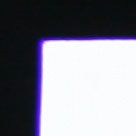 | 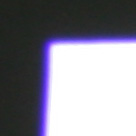 | 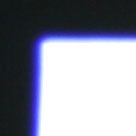 | 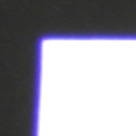 | |||
24-105mm EF L at 24mm f4 | 17-85mm EF-S at 17mm f4.0 | 18-55mm EF-S at 18mm f3.5 | 17-40mm EF L at 17mm f4 | |||
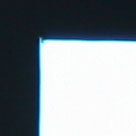 | 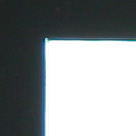 | 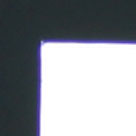 | 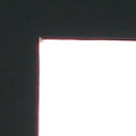 | |||
24-105mm EF L at 105mm f4 | 17-85mm EF-S at 85mm f5.6 | 18-55mm EF-S at 55mm f5.6 | 17-40mm EF L at 40mm f4 |
Canon EF 24-105mm f/4L IS USM macro using Canon 400D / XTi
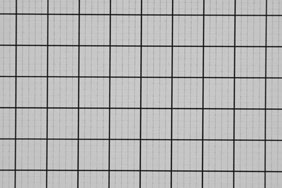 |
| 24-105mm EF L at 105mm f8 Max area of 90x60mm |
The dark lines are 10mm apart and the result is not cropped. Smaller areas are preferred in this test.To measure and compare the Canon 24-105mm’s macro performance on a cropped-frame body we photographed a chart using it and a number of rival lenses at a focal length and distance which delivered the maximum possible reproduction.
The image left was taken with the Canon EF 24-105mm mounted on an EOS 400D / XTi body and zoomed-into 105mm f8 where it captured an area measuring 90x60mm. This is roughly the same as the EF 17-40mm and a small improvement over the EF-S 17-85mm, but the EF-S 18-55mm kit lens beats them all here. Now let’s look at the geometric distortion for this lens.
Canon EF-S 17-85mm f/4-5.6 IS USM | Canon EF-S 18-55mm f/3.5-5.6 | Canon EF 17-40mm f/4.0L USM | ||
 | 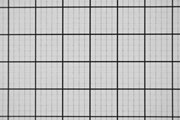 |  | ||
| 17-85mm EF-S at 85mm f8 Max area of 104x70mm | 18-55mm EF-S at 55mm f8 Max area of 66x44mm | 17-40mm EF L at 40mm f8 Max area of 92x62mm |
Canon EF 24-105mm f/4L IS USM wide-angle geometry using Canon 400D / XTi
|
To measure and compare the Canon 24-105mm’s geometric distortion on a cropped-frame body we photographed a test chart consisting of a grid pattern, using it and a number of rival lenses.
The lenses were tested at their widest focal lengths with an aperture of f8 in Aperture Priority mode.
The images were analysed with Imatest using 5th Order line calculation and the full areas presented here at a reduced resolution.
The image above was taken with the Canon EF 24-105mm lens on the Canon EOS 400D / XTi body at 24mm f8. Barrel distortion was measured at 2.65% which is measurably below that of the two EF-S lenses, especially the EF-S 17-85mm which scores quite badly in this respect. Again this is one of the benefits of mounting a full-frame compatible lens on a cropped-frame body, and the other EF lens below also performs well. It’s interesting to compare this to the same EF lenses mounted a full frame body on this page.
Canon EF-S 17-85mm f/4-5.6 IS USM | Canon EF-S 18-55mm f/3.5-5.6 | Canon EF 17-40mm f/4.0L USM |
 | 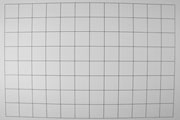 |  |
| 17-85mm EF-S at 17mm f8 Distortion: 5.71% barrel | 18-55mm EF-S at 18mm f8 Distortion: 3.35% barrel | 17-40mm EF L at 17mm f8 Distortion: 2.9% barrel |
Canon EF 24-105mm f/4L IS USM telephoto geometry using Canon 400D / XTi
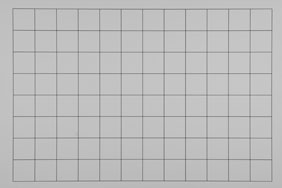 |
| 24-105mm EF L at 105mm f8 Distortion: 0.663% pincushion |
To measure and compare the Canon 24-105mm’s geometric distortion on a cropped-frame body we photographed a test chart consisting of a grid pattern, using it and a number of rival lenses.The lenses were tested at their longest focal lengths with an aperture of f8 in Aperture Priority mode.
The images were analysed with Imatest using 5th Order line calculation and the full areas presented here at a reduced resolution.
The image above was taken with the Canon EF 24-105mm lens on the Canon EOS 400D / XTi body at 105mm f8. Pincushion distortion was measured at 0.663% which is an improvement over the EF-S 17-85mm, but not as low as the EF-S 18-55mm kit lens or the EF 17-40mm, which is virtually distortion-free here. The pincushion distortion of the EF 24-105mm when zoomed-in becomes even more noticeable on a full-frame body as can be seen on this results page. Now let’s see how the lens performs in terms of vignetting.
Canon EF-S 17-85mm f/4-5.6 IS USM | Canon EF-S 18-55mm f/3.5-5.6 | Canon EF 17-40mm f/4.0L USM |
 |  |  |
| 17-85mm EF-S at 85mm f8 Distortion: 0.967% pincushion | 18-55mm EF-S at 55mm f8 Distortion: 0.389% pincushion | 17-40mm EF L at 40mm f8 Distortion: 0.187% pincushion |
Canon EF 24-105mm f/4L IS USM wide-angle uniformity using Canon 400D / XTi
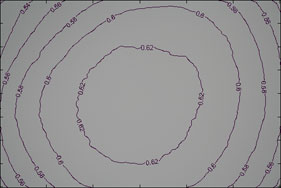 |
| 24-105mm EF L at 24mm f4 Mean corner fall-off: 84.4% |
To measure and compare the Canon EF 24-105mm’s vignetting and light fall-off on a cropped-frame body we photographed a white target with a highly diffused custom filter using it and a number of rival lenses.The lenses were tested at their widest focal lengths with the aperture wide open in Aperture Priority mode.
The images were analysed with Imatest and the full areas presented here at a reduced resolution. Bigger percentages are better.
The image above was taken with the Canon EF 24-105mm lens on the Canon EOS 400D / XTi body at 24mm f4. Here the light falls off in the corners to an average of 84.4% of the centre measurement, which means you’ll barely notice any darkening in the corners with this lens when zoomed-out on a cropped-frame body. In contrast, the EF-S 18-55mm kit lens and EF-S 17-85mm exhibit more noticeable darkening in the corners, especially the latter. Of course this is one of the benefits of using a full-frame compatible lens on a cropped-frame body, something you’ll also see with the EF 17-40mm.
Canon EF-S 17-85mm f/4-5.6 IS USM | Canon EF-S 18-55mm f/3.5-5.6 | Canon EF 17-40mm f/4.0L USM | ||
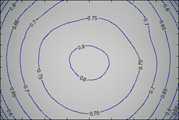 | 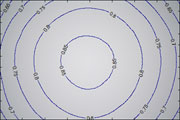 | 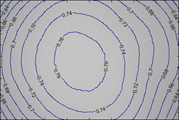 | ||
| 17-85mm EF-S at 17mm f4 Mean corner fall-off: 57.8% | 18-55mm EF-S at 18mm f3.5 Mean corner fall-off: 68.8% | 17-40mm EF L at 17mm f4 Mean corner fall-off: 79.4% |
Canon EF 24-105mm f/4L IS USM telephoto uniformity using Canon 400D / XTi
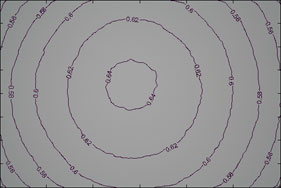 |
| 24-105mm EF L at 105mm f4 Mean corner fall-off: 83.6% |
The images were analysed with Imatest and the full areas presented here at a reduced resolution. Bigger percentages are better.To measure and compare the Canon 24-105mm’s vignetting and light fall-off on a cropped-frame body we photographed a white target with a highly diffused custom filter using it and a number of rival lenses.The lenses were tested at their longest focal lengths with the aperture wide open in Aperture Priority mode.
The image above was taken with the Canon EF 24-105mm lens on the Canon EOS 400D / XTi body at 105mm f4. Here the light falls off in the corners to an average of 83.6% of the centre measurement, which again means you’ll barely notice any darkening in the corners with this lens when zoomed-in on a cropped-frame body.
While you’d expect a full-frame compatible lens to perform well in this regard on a cropped-frame body, the other models we’ve compared it to also exhibit little darkening in the corners when they’re zoomed-in. Either way, vignetting / light fall-off is not an issue with the EF 24-105mm when mounted on a cropped-frame body. This is in some contrast to its performance on a full-frame body, where the vignetting can be quite apparent – see this page. Now let’s move onto our sample images gallery.
Canon EF-S 17-85mm f/4-5.6 IS USM | Canon EF-S 18-55mm f/3.5-5.6 | Canon EF 17-40mm f/4.0L USM | ||
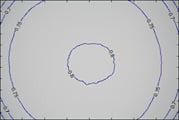 | 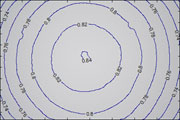 | 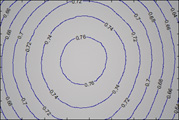 | ||
| 17-85mm EF-S at 85mm f5.6 Mean corner fall-off: 77.5% | 18-55mm EF-S at 55mm f5.6 Mean corner fall-off: 83.8% | 17-40mm EF L at 40mm f4 Mean corner fall-off: 82.2% |
